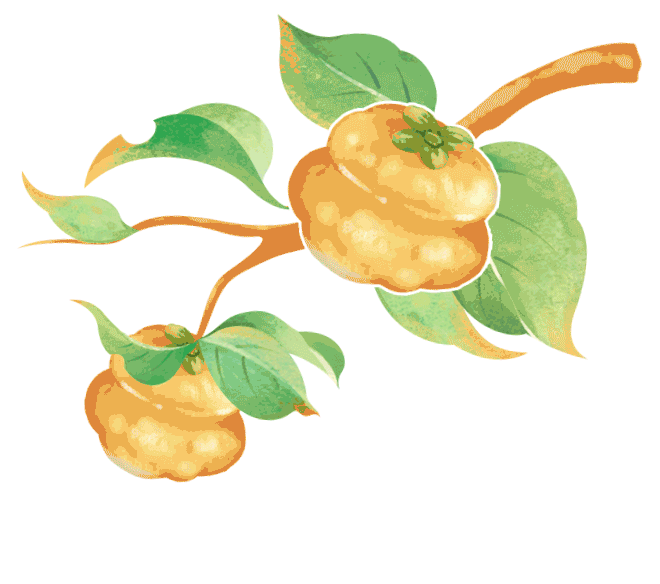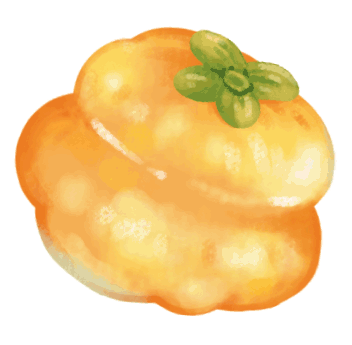Autumn is a transitional phase from heat to cool, where yang diminishes and yin increases. Traditional Chinese Medicine (TCM) states: “Nurture yang in spring and summer, and nurture yin in autumn and winter.” “Dryness” is the predominant qi of autumn, hence it is referred to as “autumn dryness.” Dryness can harm the body primarily by depleting body fluids, leading to various symptoms of dryness. The organ associated with autumn is the “lung,” which governs the autumn metal qi. In autumn, it is advisable to conserve rather than disperse. When autumn dryness invades the lungs, symptoms such as “dryness, roughness, and peeling” may occur due to the pathogenic effects of dryness. Therefore, autumn health preservation should focus on “preventing lung dryness and protecting yin fluids.”
Autumn Health PreservationAppropriate Nourishment in Autumn
Autumn is the best time for appropriate nourishment, not only to restore and regulate the functions of various organs but also to prepare for the coming winter. When it comes to dietary therapy, attention should be paid to:
01Moisten the Lungs and Generate Fluids
Due to the dry climate in autumn, it is easy to injure lung fluids. Foods that moisten the lungs and generate fluids should be consumed, such as pears, lily bulbs, tremella (silver fungus), and honey. Pears can be eaten raw or juiced, lily bulbs can be cooked with rice to make porridge, tremella can be made into tremella soup, and honey can be mixed with water.
02Reduce Spicy and Increase Sour
In autumn, spicy foods such as chili, ginger, and scallions should be consumed less to avoid exacerbating dryness. It is advisable to increase the intake of sour foods, such as hawthorn, grapes, and apples, as sour flavors help to astringe lung qi.
03Nourish Yin and Moisten Dryness
Choose foods that have the effect of nourishing yin and moistening dryness, such as sesame, walnuts, glutinous rice, and lotus root. Sesame can be eaten roasted, walnuts can be eaten directly or cooked in porridge, glutinous rice can be made into glutinous rice dishes or porridge, and lotus root can be eaten in salads or soups.
 Here are some recommended dietary therapy recipes for autumn health preservation:01Eight Treasure Papaya Stewed Pigeon Soup —— Gently Strengthens the Spleen and Nourishes Moisture
Here are some recommended dietary therapy recipes for autumn health preservation:01Eight Treasure Papaya Stewed Pigeon Soup —— Gently Strengthens the Spleen and Nourishes Moisture
 Ingredients: 1/4 papaya, 2 pigeons, 10g goji berries, 3 red dates, 10g codonopsis (Dang Shen)
Ingredients: 1/4 papaya, 2 pigeons, 10g goji berries, 3 red dates, 10g codonopsis (Dang Shen)
Method:
1. Clean the pigeon meat, pat dry, blanch in boiling water, then rinse; 2. Soak the codonopsis in water, clean, and set aside; 3. Clean the papaya, cut into pieces, peel, and remove seeds; 4. Place the blanched pigeon meat in a stew pot, add appropriate water, bring to a boil, and skim off the foam; 5. Add codonopsis, red dates, goji berries, and papaya pieces; 6. Reduce to low heat and simmer for about 2 hours, seasoning with salt and MSG to taste.02Tremella Peach Gum Glutinous Rice Lotus Seed Soup —— Strengthens the Spleen and Nourishes the Stomach, Moistens Dryness
 Ingredients: 10g tremella, 10g peach gum, 100g glutinous rice, 50g lotus seeds, appropriate amount of rock sugar
Ingredients: 10g tremella, 10g peach gum, 100g glutinous rice, 50g lotus seeds, appropriate amount of rock sugar
Method:
1. Soak the tremella until soft, clean, and set aside; 2. Soak the peach gum until soft, then wash it clean; 3. Wash the glutinous rice and soak it in water, peel the lotus seeds; 4. Place all ingredients in a pot, add appropriate water, bring to a boil, skim off the foam, and simmer on low heat for about 1.5 hours; 5. Add rock sugar and cook until dissolved.03Five-Fingered Hairy Peach Bone Soup
 Ingredients: 400g pork bones, 25g five-fingered hairy peach, 5 red dates, 20g yam, 200g chestnuts, slices of ginger, 15g lily bulbs, 15g lotus seeds
Ingredients: 400g pork bones, 25g five-fingered hairy peach, 5 red dates, 20g yam, 200g chestnuts, slices of ginger, 15g lily bulbs, 15g lotus seeds
Method:
Wash all ingredients (except for lily bulbs), place them in a pot, add appropriate water, bring to a boil, then reduce to low heat and simmer for 2 hours. Add lily bulbs in the last 20 minutes, then season with salt.
Effects: Nourishes yin, moistens the lungs, tonifies the kidneys, stabilizes essence, warms the lungs, alleviates wheezing, strengthens the spleen, and benefits the stomach, enhances intelligence, and nourishes the brain.
04Old Duck and Radish Soup
 Ingredients: 1 green-headed duck, 1 green radish (about 500g), a little dried tangerine peel, 3 slices of ginger
Ingredients: 1 green-headed duck, 1 green radish (about 500g), a little dried tangerine peel, 3 slices of ginger
Method:
Clean the green-headed duck, cut into pieces, blanch in water, and skim off the foam; peel and clean the green radish, cut into thick pieces; soak the dried tangerine peel until soft, remove the fibers, wash, and cut into shreds. Once the water in the soup pot boils, add all duck pieces, tangerine peel, and ginger, and simmer on low heat for about 1.5 hours. Finally, add the radish pieces and simmer for another half hour, then season and serve.
Effects: Nourishes yin, replenishes deficiency, regulates qi, strengthens the spleen, and moistens the lungs to stop cough.
05Lotus Seed and Lily Bulb Pork Heart Soup
 Ingredients: 1 pork heart, 120g fresh lotus seeds, 20g lily bulbs, 20g radix adenophorae (Sha Shen), 20g ophiopogon (Mai Dong), 10 dried longans, 1 honey date, appropriate goji berries, and slices of ginger
Ingredients: 1 pork heart, 120g fresh lotus seeds, 20g lily bulbs, 20g radix adenophorae (Sha Shen), 20g ophiopogon (Mai Dong), 10 dried longans, 1 honey date, appropriate goji berries, and slices of ginger
Method:
1. Blanch in cold water; 2. Remove the heart from the lotus seeds; 3. After cleaning the other ingredients, place all in the pot (except for goji berries); 4. Add appropriate water, bring to a boil, then reduce to low heat and cook for one hour; add goji berries 10 minutes before finishing; season with salt before serving.
Effects: Strengthens the spleen, nourishes the stomach, clears heat, nourishes the heart, and alleviates dryness.
06Lotus Root and Snow Pear Soup —— Moistens the Lungs and Clears Dryness
 Ingredients: 100g lotus root, 1 snow pear, 10 red dates, 10 goji berries
Ingredients: 100g lotus root, 1 snow pear, 10 red dates, 10 goji berries
Method:
1. Peel and core the snow pear and cut into pieces; similarly, peel and cut the lotus root; remove the pits from the red dates. 2. Place all ingredients in a pot, bring to a boil, then reduce to low heat and simmer for 30 minutes.
07Yam Tranquilizing Porridge
 Ingredients: 300g fresh yam, 10g goji berries, 100g rice, 100g longan, appropriate amount of rock sugar, 10 lotus seeds, 3 red dates.
Ingredients: 300g fresh yam, 10g goji berries, 100g rice, 100g longan, appropriate amount of rock sugar, 10 lotus seeds, 3 red dates.
Method:
Wash and soak the lotus seeds, wash and soak the red dates and remove the pits, wash and soak the rice for 3-4 hours; clean and peel the yam, cut into small pieces; bring 1000ml of water to a boil, add all ingredients (except rock sugar), boil for 10 minutes, then reduce to low heat and simmer for 2 hours; add rock sugar and cook until dissolved before serving.
Effects: Tonifies qi and blood, improves complexion, tonifies kidneys, warms the stomach, and restores gastrointestinal function.
08He Huan Flower Porridge
 Ingredients: 30g he huan flower, 100g rice, appropriate amount of brown sugar.
Ingredients: 30g he huan flower, 100g rice, appropriate amount of brown sugar.
Method:
Wash the ingredients; add 500ml of water, simmer until the porridge thickens, and consume warm before bed.
Effects: Calms the spirit, beautifies, energizes, and promotes longevity.
09Lily and Lotus Seed Lean Meat Porridge
 Ingredients: 30g lily bulbs, 15g lotus seeds, 20g peach kernels, 100g lean meat, 100g rice
Ingredients: 30g lily bulbs, 15g lotus seeds, 20g peach kernels, 100g lean meat, 100g rice
Method:
Cut the lean meat into small pieces, then wash and place it together with rice, lotus seeds, lily bulbs, and peach kernels into a clay pot, add appropriate purified water, bring to a boil, then reduce to low heat and simmer for half an hour until cooked.
Effects: Strengthens the spleen, benefits qi, moistens the lungs, relieves throat discomfort, regulates the nutritive and defensive qi, generates body fluids, calms the spirit, and alleviates anxiety, especially suitable for those suffering from insomnia due to autumn dryness.

The content of this article is sourced from the Guangdong Provincial Hospital of Traditional Chinese Medicine, authored by Tan Meiying, Chief Pharmacist and Professor of the Pharmacy Department at the Second Affiliated Hospital of Guangdong Province. If there is any infringement, please contact this public account for deletion. The above dietary therapy recipes are for reference only; individual constitution varies, and supplementation should be done in moderation.


